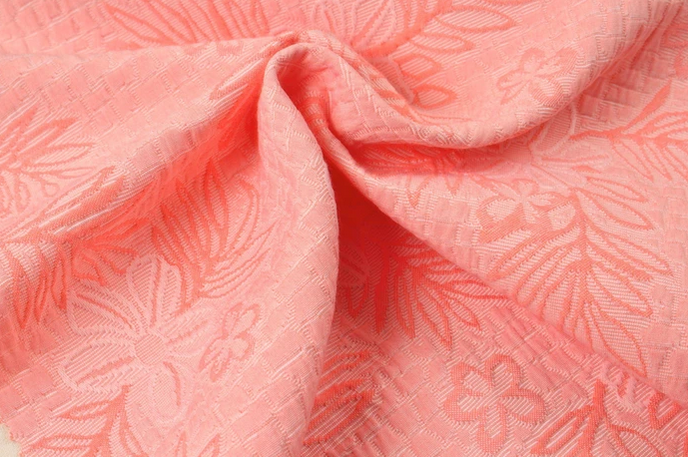
Jacquard Fabrics: A Work of Art by a Genious
The term jacquard refers to the weaving process applied to deliver the texture. Instead of being colored, embroidered, or printed on top, jacquard fabric is a textured fabric with intricate patterns actually woven into it.
French inventor Joseph Marie Jacquard invented the jacquard fabric in 1801, but the concept of programmable patterning on fabric dates back to 16th-century drawloom. It became popular for use in clothing due to its durability, versatility, and beauty. There are many different types of jacquards, depending on how they are constructed. For example, some may be made from cotton, while others might be crafted from silk or wool blends.
Jacquard-style fabrics are sometimes referred to as brocade fabrics because they have typically been associated with royalty and nobility due to their opulence and grandeur. Thus, this fabric has always had ties to high fashion brands even though its origins date back centuries ago when it was originally invented by Joseph Marie Jacquard, who lived from 1752 - 1834 AD under King Louis XVI, during French Revolutionary times.
How is a jacquard fabric made?
Jacquard fabric is a type of woven fabric. The process of creating this unique fabric involves weaving yarns onto a loom before using special tools to punch holes into the cardstock pattern cards, which correspond with threads on the loom's harnesses.
Jacquard fabric designs were originally created with the help of punch cards, which made up part of one section in jacquard weaving machines — the second significant kind of loom used for making textiles. After these punched cards had been inserted into the machine at regular intervals, warp threads were drawn.
The card reader passed each set piece thread through another slot to get to its final position on the completed weave before punching out the following hole pattern required by the weft yarns.
In the video below, you can get a more practical idea of how a jacquard punch card weaving machine works:
The different pattern comes from the way that it is made, not an added yarn or thread. It usually has geometric patterns on it because of its complex construction technique. Jacquards are pretty expensive to make, so they are often used for luxury clothing items like dresses and blouses rather than mass-produced fabrics found in stores.
Since the 1980’s, modern computer programming has been gradually replacing Jacquard's punch-card programming, allowing for considerably higher design pattern complexity. Despite this, the textiles they create still carry Jacquard's name, as a tribute to the incredible innovations he pioneered more than two centuries ago.
Dyeing and printing processes are becoming less expensive because of technological breakthroughs, making cloth with many attractive printing patterns and sketches more accessible to the general public. You can see so for yourself by visiting our collection of jacquard fabrics here.
What kind of fibers are normally used in jacquard?
Although initially, when Mr Jacquard invented the Jacquard to enhance the production of silk brocades for the royalty and nobility, nowadays the jacquards are made of any different fibers, depending on the aimed end-use or target price.
In addition to this, in the last decades a new type of Jacquard has been introduced: the knitted jacquard . Being the basic concept the same as the woven one, the knitted jacquard allows to have a more comfortable and sport looking garments. Again, any fiber (yarn) can be used to produce a knitted jacquard, bust most preferably, the industry is used to employ a blend of cotton (or viscose) with polyester in order to obtain resistant and not-too-expensive fabrics. When some extra comfort is needed, the weaver introduce a lycra/elastane yarn in the weaving process.
